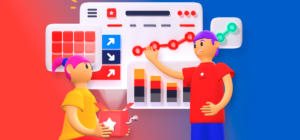A Guide to Monetization Platforms: Empowering Content Creators and Businesses
A Guide to Monetization Platforms: Empowering Content Creators and Businesses
Blog Article
The digital landscape has given rise to countless creators, innovators, and entrepreneurs, each seeking to leverage online spaces to construct audiences and, ultimately, generate revenue. To facilitate this, monetize are becoming essential tools, offering creators a streamlined way to convert content, products, or services into income. Here’s a thorough look into what monetization platforms are, where did they work, and why they matter in today’s digital economy.
What Is a Monetization Platform?
A monetization platform is really a digital service so that individuals or businesses to earn revenue from their content, products, or services online. These platforms encompass various models, including ad revenue, subscriptions, e-commerce, digital goods, donations, plus more. Essentially, monetization platforms act as intermediaries, supplying the tools, infrastructure, and quite often a built-in audience to help creators and businesses earn money.
Examples include Patreon, YouTube, OnlyFans, and Shopify—each catering to several types of creators, from video influencers and writers to artists and entrepreneurs. While some platforms specialize in specific industries (like YouTube for video or Spotify for music), others offer broader support for diverse types of digital content and services.
Types of Monetization Platforms
Ad Revenue Platforms
Examples: Google AdSense, YouTube, Facebook Audience Network
How It Works: These platforms allow creators to earn revenue by displaying ads with their audience. Income is generated based on metrics for example impressions (views) or clicks.
Best For: Bloggers, video content creators, and app developers that have a large audience and even keep content free for users.
Subscription-Based Platforms
Examples: Patreon, Substack, OnlyFans
How It Works: Subscription platforms enable creators to provide exclusive content or perks to paid subscribers. This model is popular for many who produce content often and wish to cultivate a dedicated fan base.
Best For: Artists, writers, podcasters, and influencers who produce frequent, high-quality content for niche audiences.
E-commerce Platforms
Examples: Shopify, BigCommerce, WooCommerce
How It Works: E-commerce platforms are made to support the sale of physical and digital goods. They provide customizable storefronts, payment processing, inventory management, as well as other tools for online selling.
Best For: Entrepreneurs, artists, and small businesses aiming to sell products directly to consumers.
Crowdfunding and Donation Platforms
Examples: GoFundMe, Ko-fi, Buy Me a Coffee
How It Works: Crowdfunding platforms allow creators to boost funds directly from other audience. These platforms will often be used by artists, independent filmmakers, and writers who need support for specific projects or ongoing work.
Best For: Creators who've supportive audiences ready to contribute, in particular those with a clear project or goal.
Affiliate Marketing Platforms
Examples: Amazon Associates, ShareASale, Rakuten
How It Works: Creators earn commission by promoting products or services and driving sales through unique affiliate links. Income is based on conversions or sales instead of direct content monetization.
Best For: Bloggers, influencers, and website owners that have a knack for product recommendations or lifestyle content.
Key Benefits of Monetization Platforms
Accessibility: Most monetization platforms have low barriers to entry, so that it is easy for beginners to get started on earning revenue from their passions or projects.
Audience Engagement: By offering subscription options or special perks, creators can deepen connections using their audience, resulting in better retention and long-term support.
Multiple Revenue Streams: Many creators work with a mix of platforms to diversify their income, combining ad revenue with merchandise sales, as an example, or subscriptions with online marketing.
Analytics and Insights: Monetization platforms often come with built-in analytics, allowing creators to track revenue, audience demographics, and engagement metrics to optimize their offerings.
Global Reach: With the digital economy’s global nature, creators can monetize audiences worldwide, gaining exposure and revenue from the broad and diverse subscriber base.
Challenges and Considerations
While monetization platforms provide substantial opportunities, creators face certain challenges:
Platform Fees: Most platforms have a percentage of earnings or charge transaction fees, lowering the overall payout to creators.
Content Restrictions: Platforms like YouTube and Patreon have guidelines around acceptable content, which can limit some creators’ options.
Dependence on Algorithms: For platforms like YouTube and Instagram, creators often rely heavily on algorithms to succeed in audiences, driving them to vulnerable to platform changes.
Revenue Variability: Ad revenue and donation-based income can fluctuate greatly, bringing about inconsistent income for creators who be determined by it full-time.
Future Trends in Monetization Platforms
Personalized Experiences: As audiences increasingly seek unique and personalized content, platforms may offer more customizable options, allowing creators to deliver tailored experiences to specific audience segments.
Enhanced AI and Analytics: AI is expected to provide creators with predictive insights, content suggestions, and more efficient monetization strategies to improve engagement and revenue potential.
Greater Flexibility in Payment Models: With growing creator demand for more diverse income streams, future platforms may integrate flexible monetization models, for example one-time payments, sliding-scale fees, and time-limited use of exclusive content.
Cross-Platform Integration: As creators utilize multiple platforms, the requirement for cross-platform integration will probably grow, enabling users to consolidate insights and manage revenue across various platforms better.
Focus on Community-Centric Models: Platforms are increasingly concentrating on community features that permit fans to interact with each other and also the creator directly, deepening audience loyalty and creating additional avenues for support.
Monetization platforms have empowered a brand new wave of creators and entrepreneurs to show their passions into viable causes of income. By understanding the unique opportunities and challenges of each platform type, creators and businesses can choose the best platform or combination of platforms to meet their specific needs and goals. With the digital world evolving rapidly, monetization platforms continue to adapt, offering more opportunities for creators to thrive inside online economy.